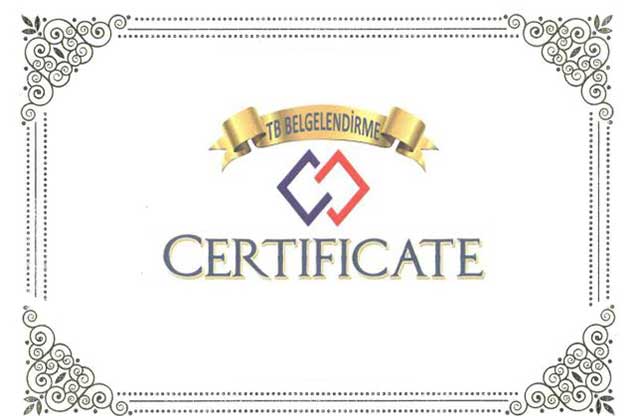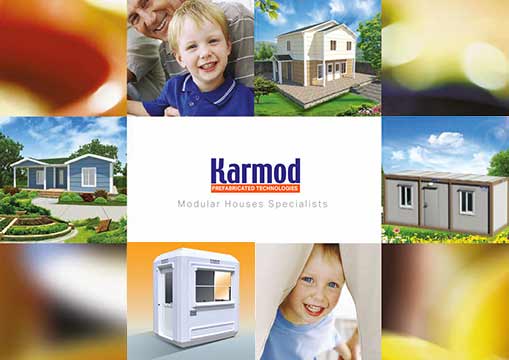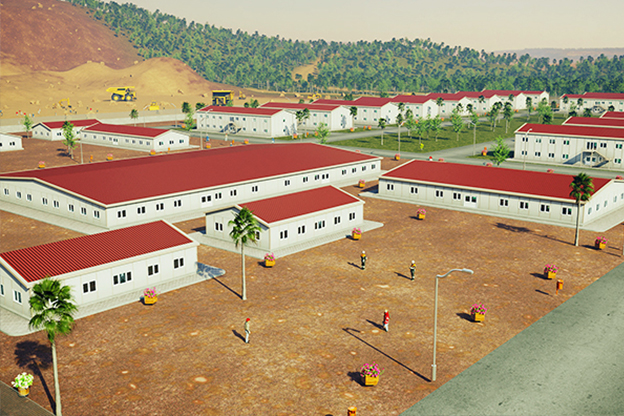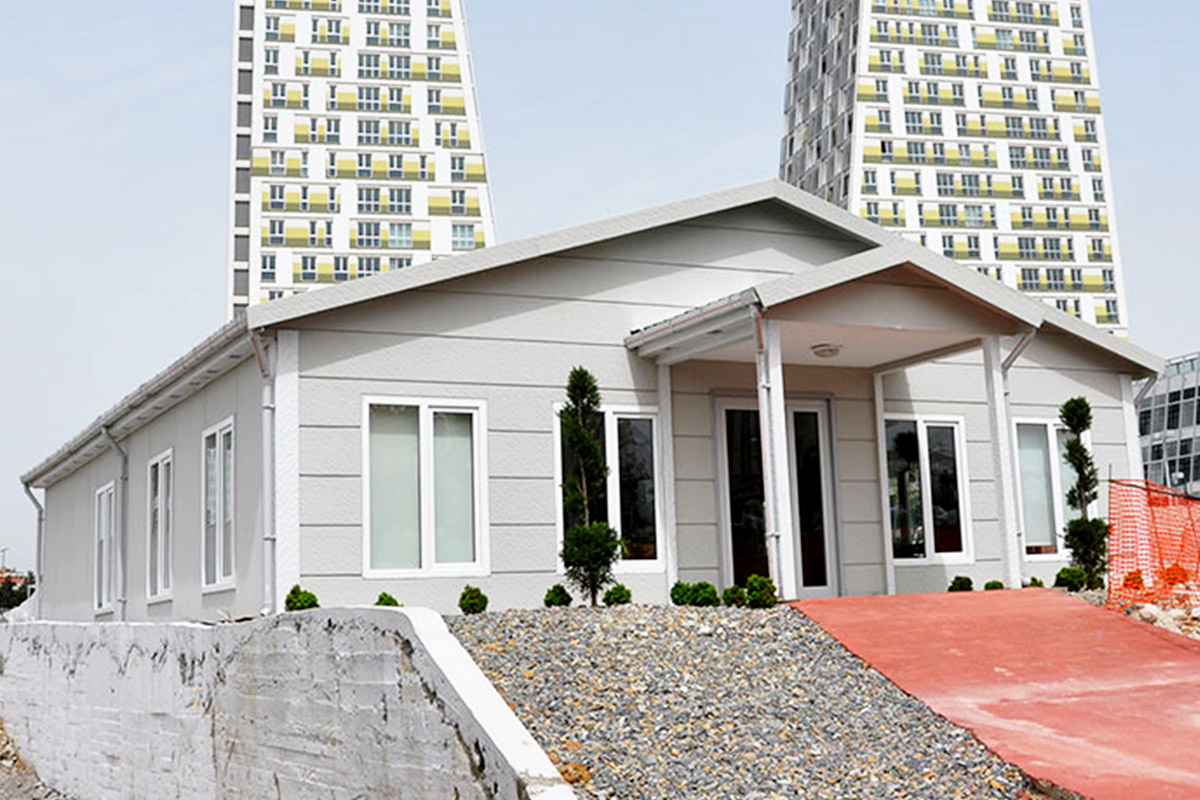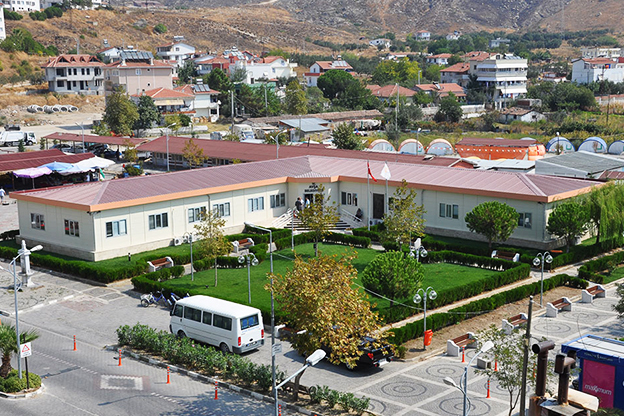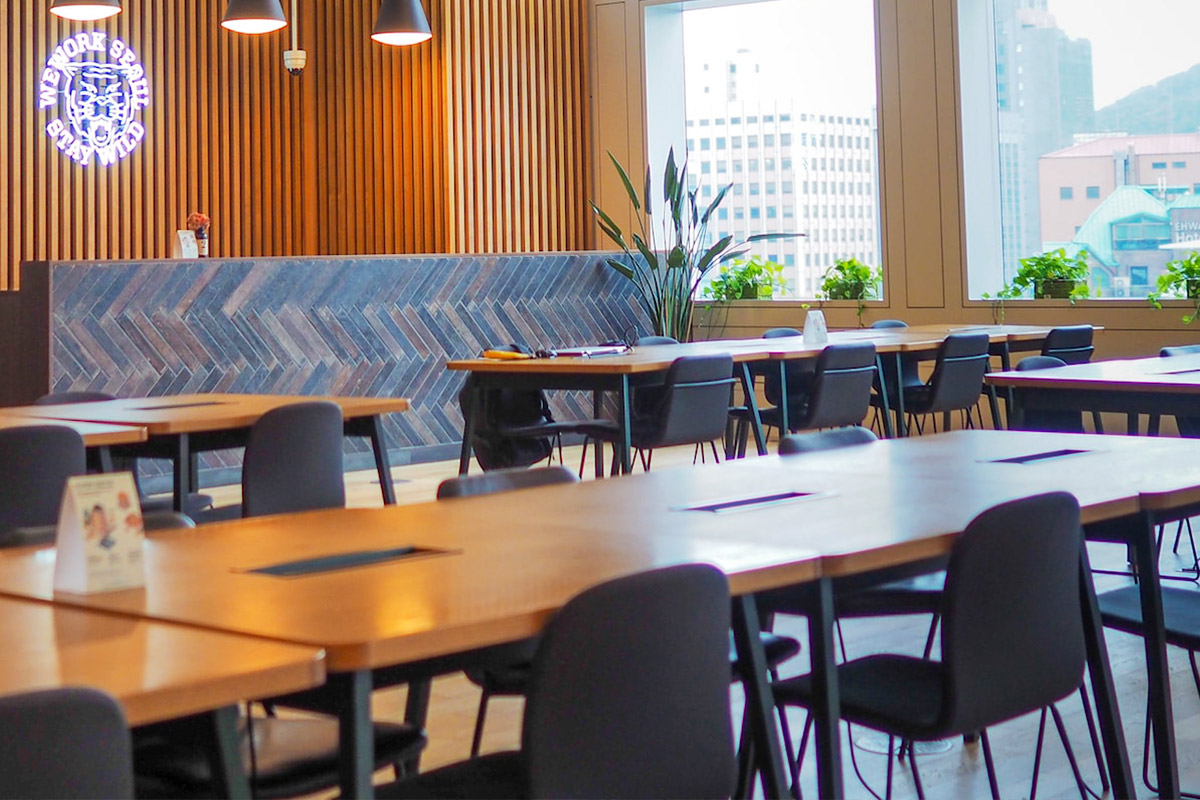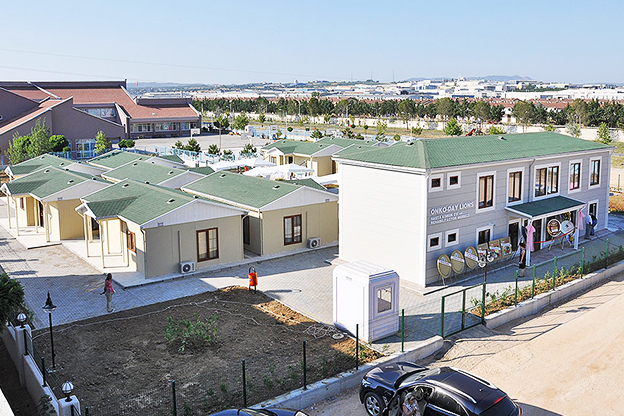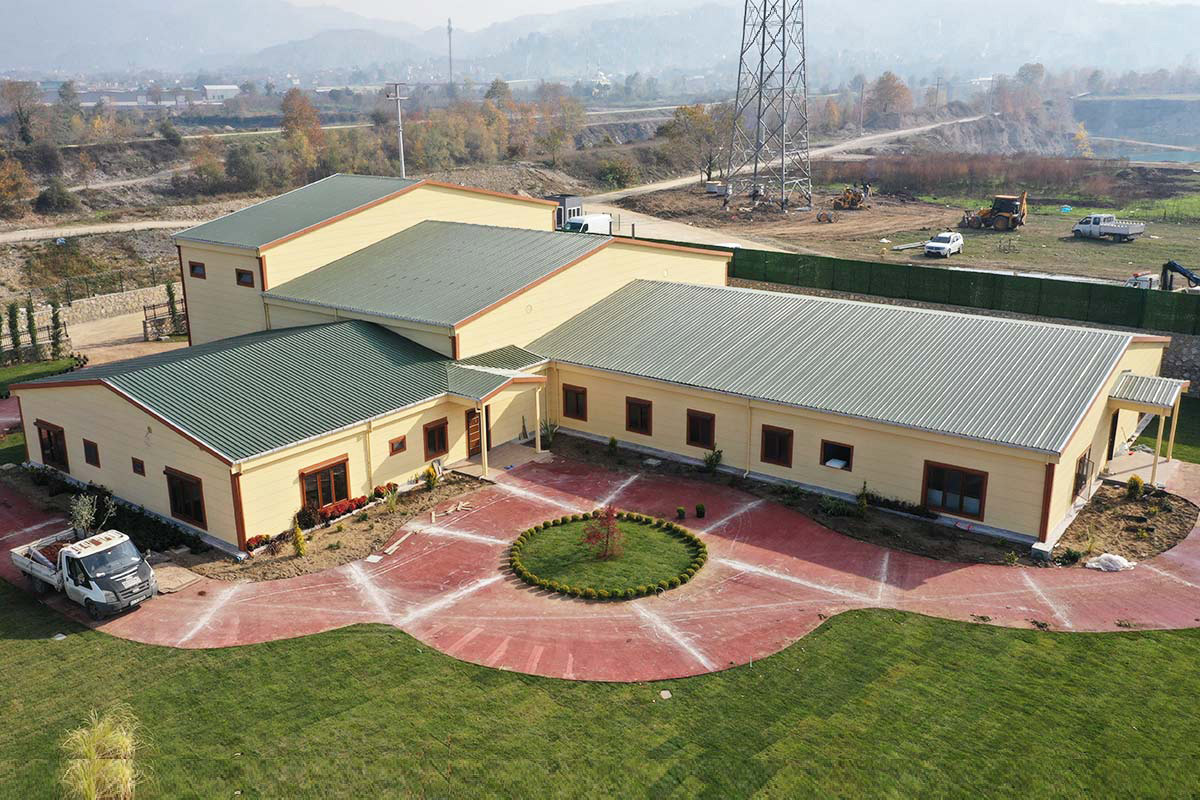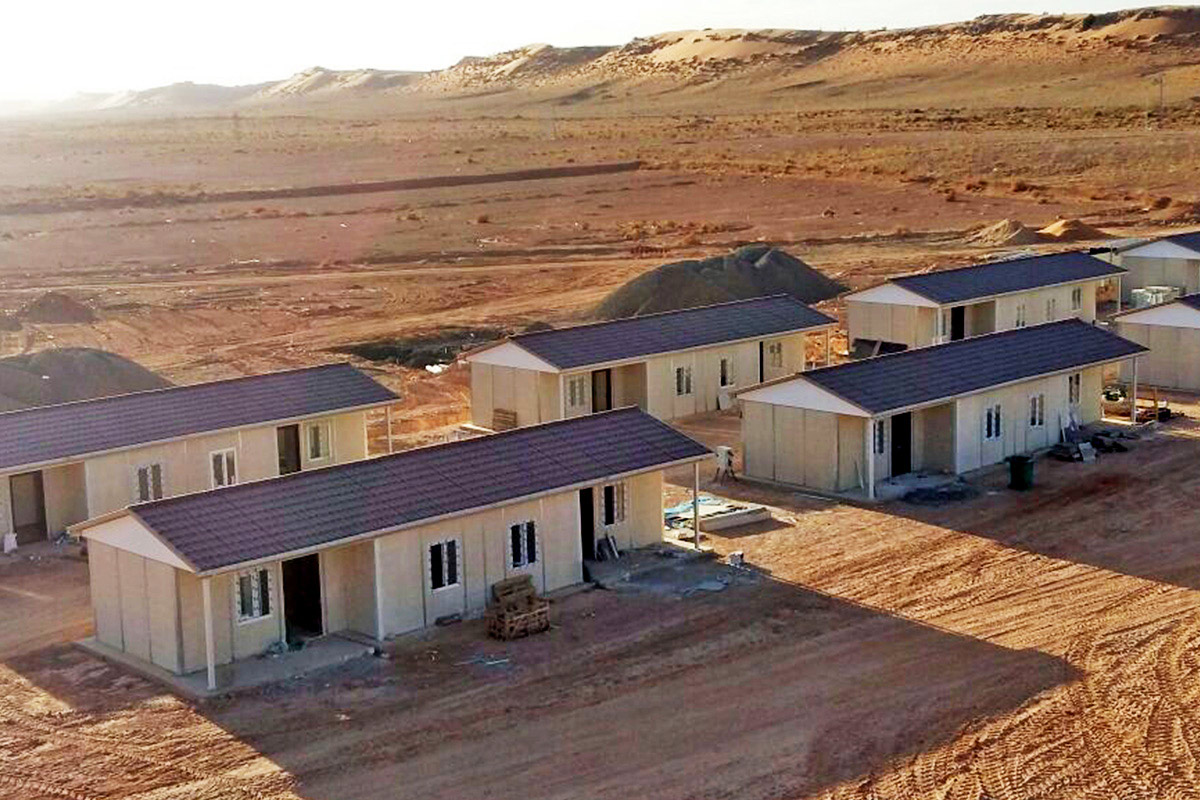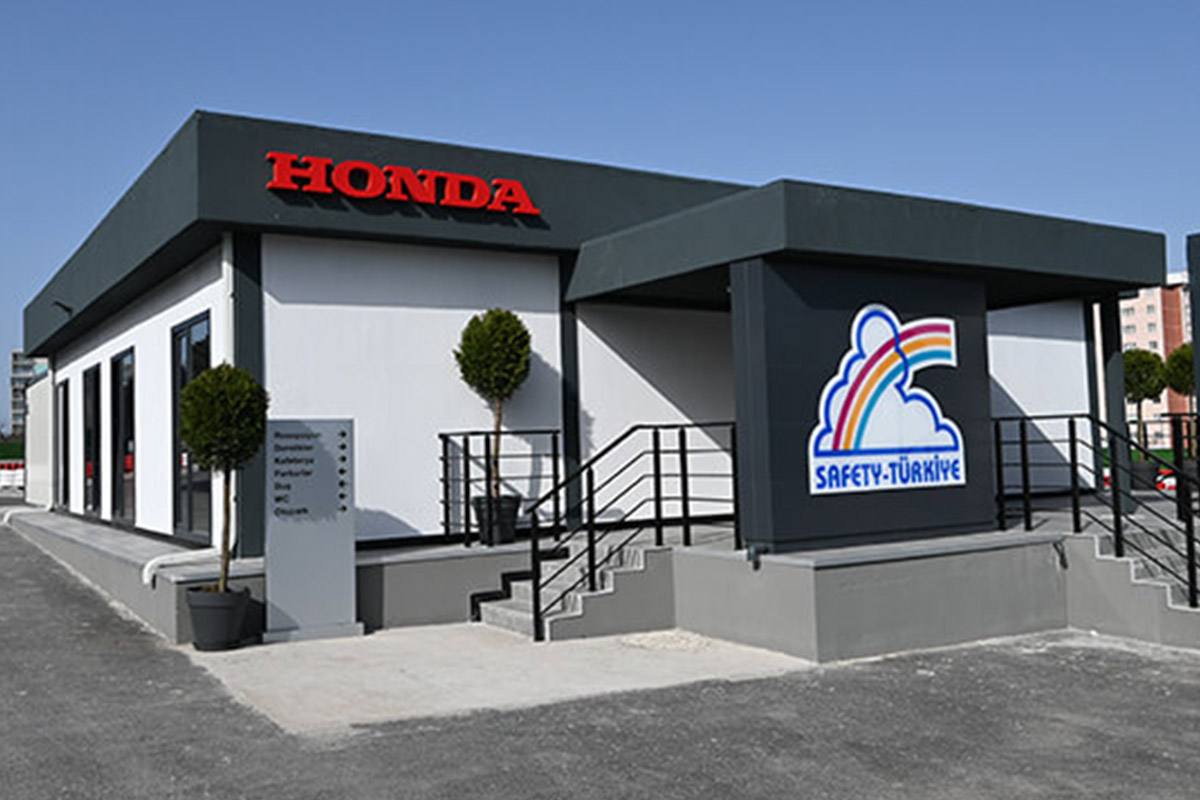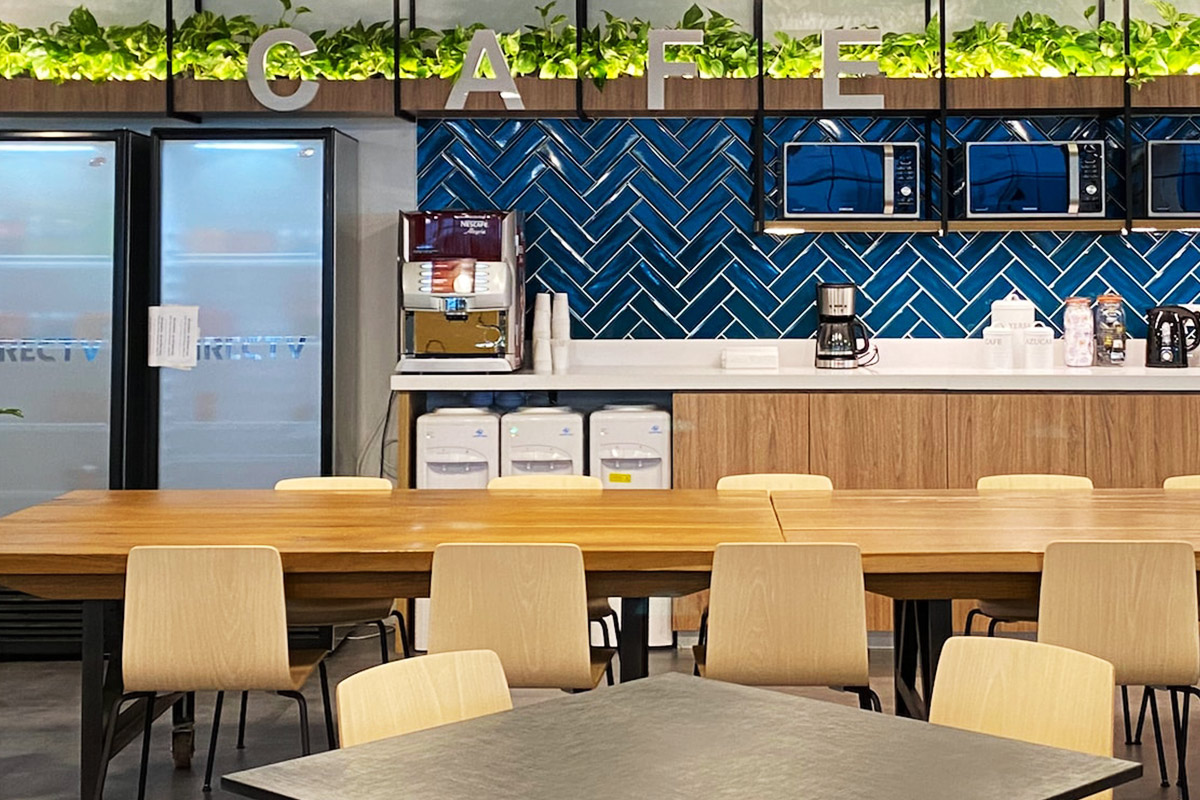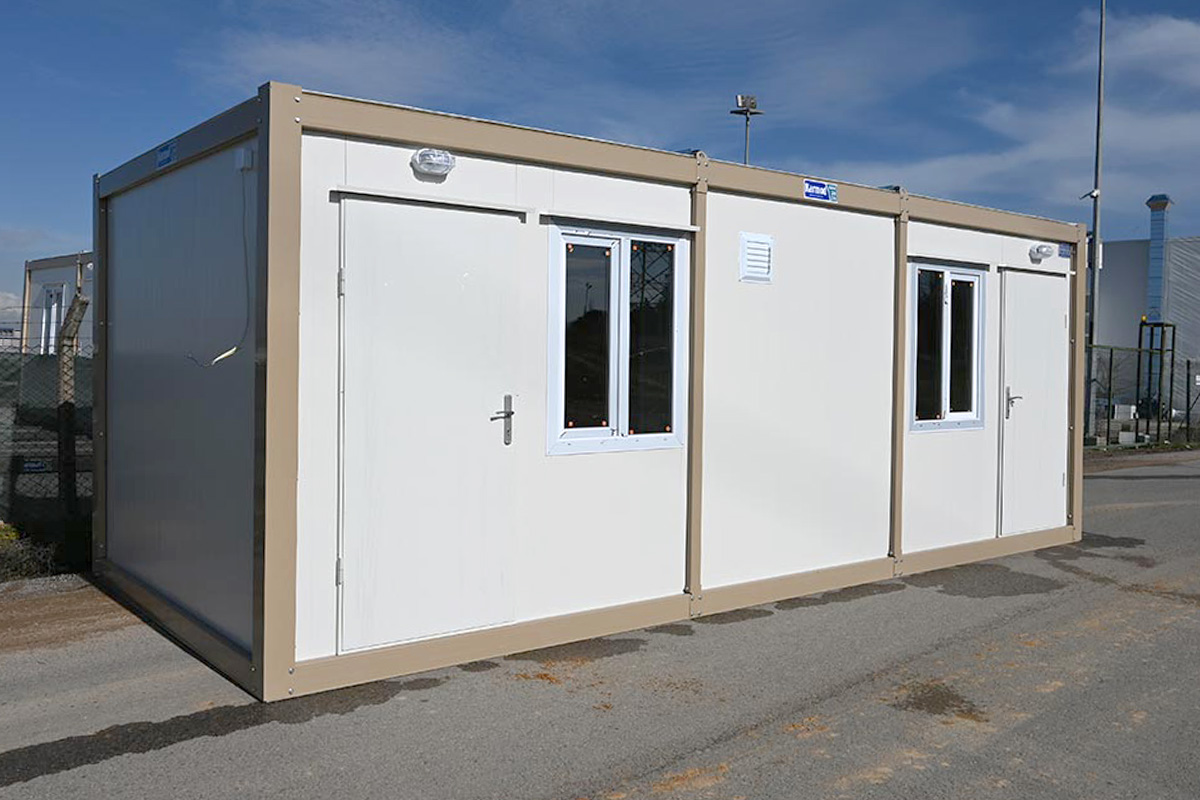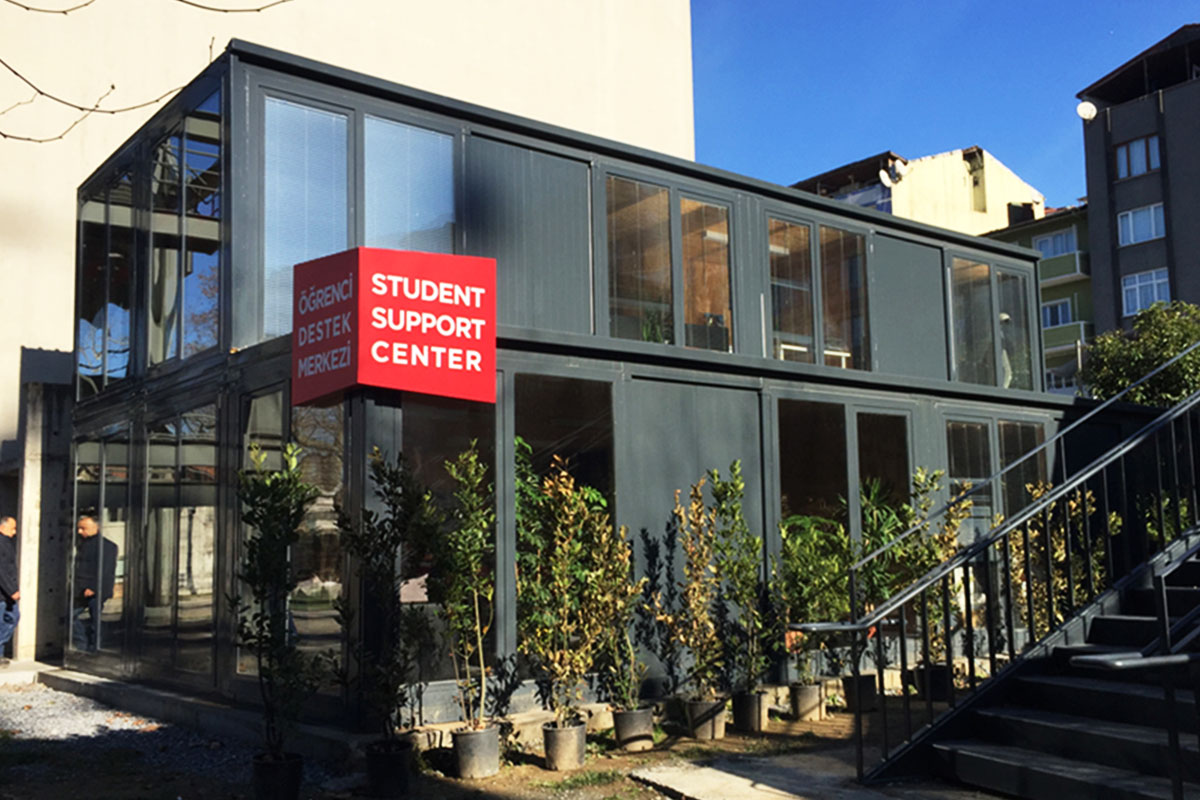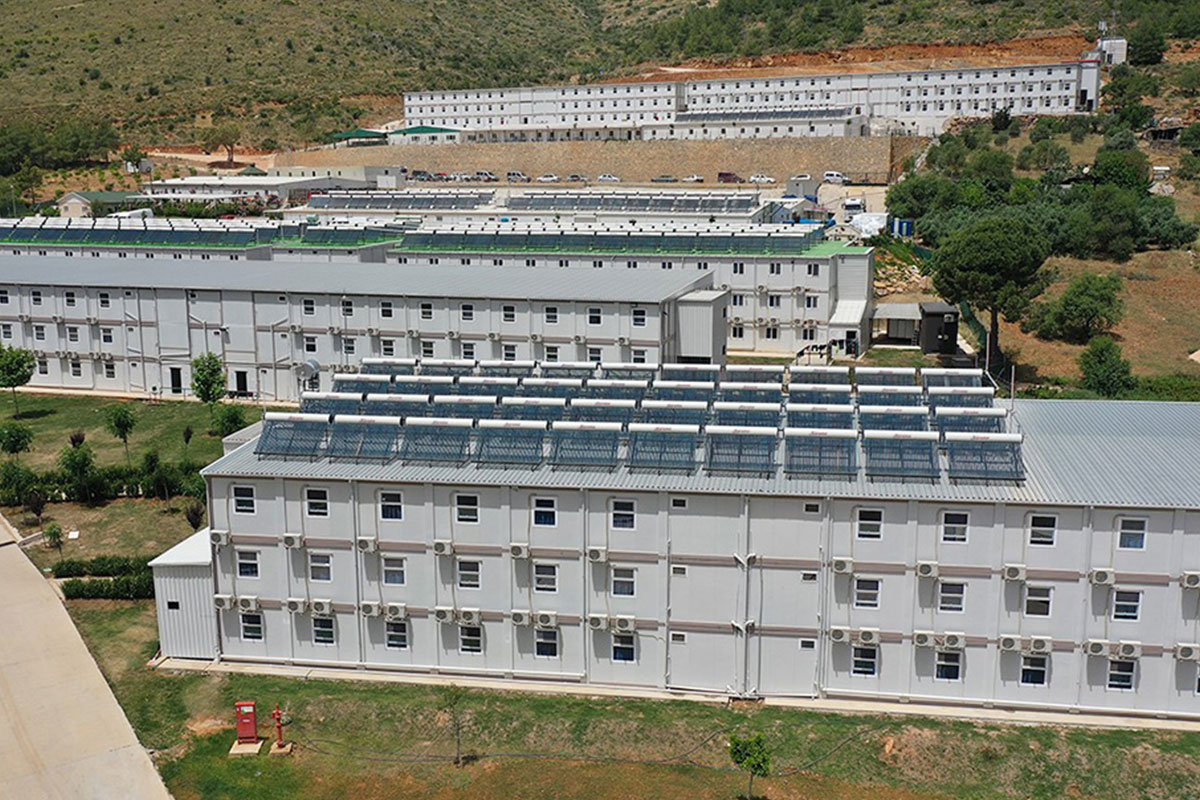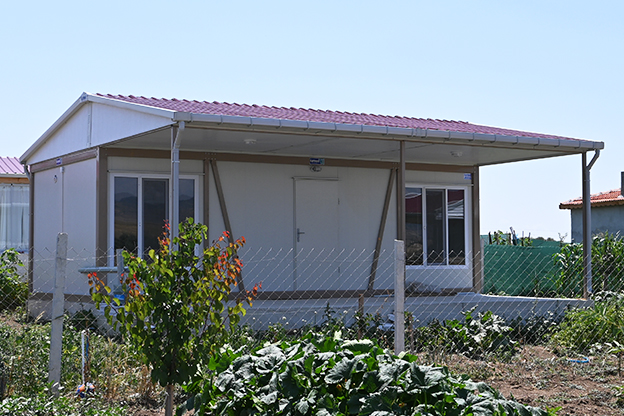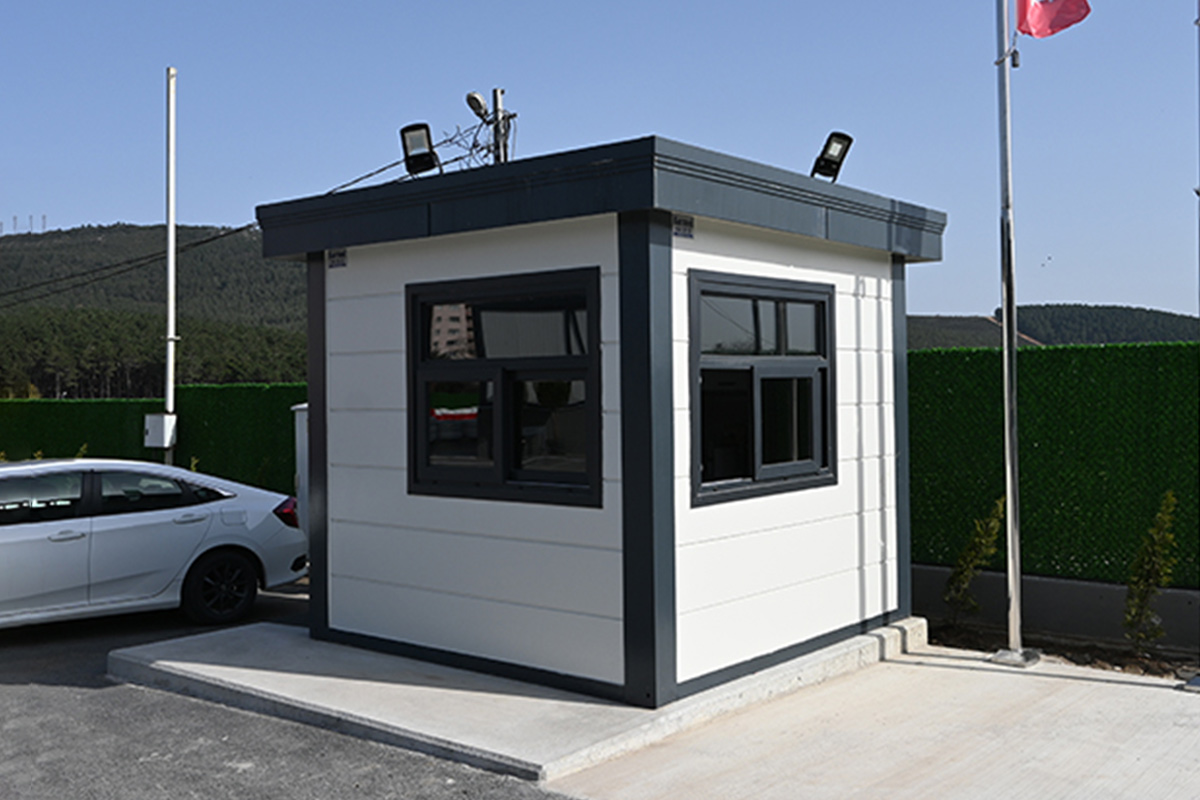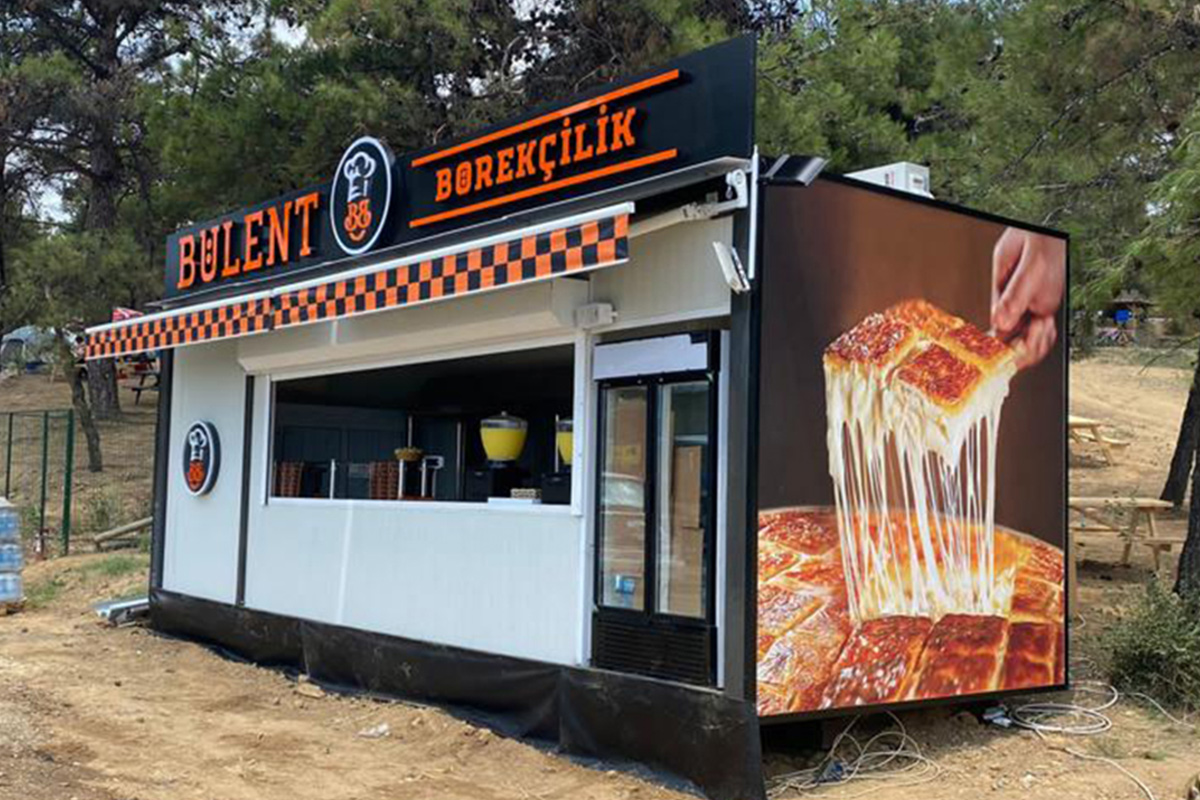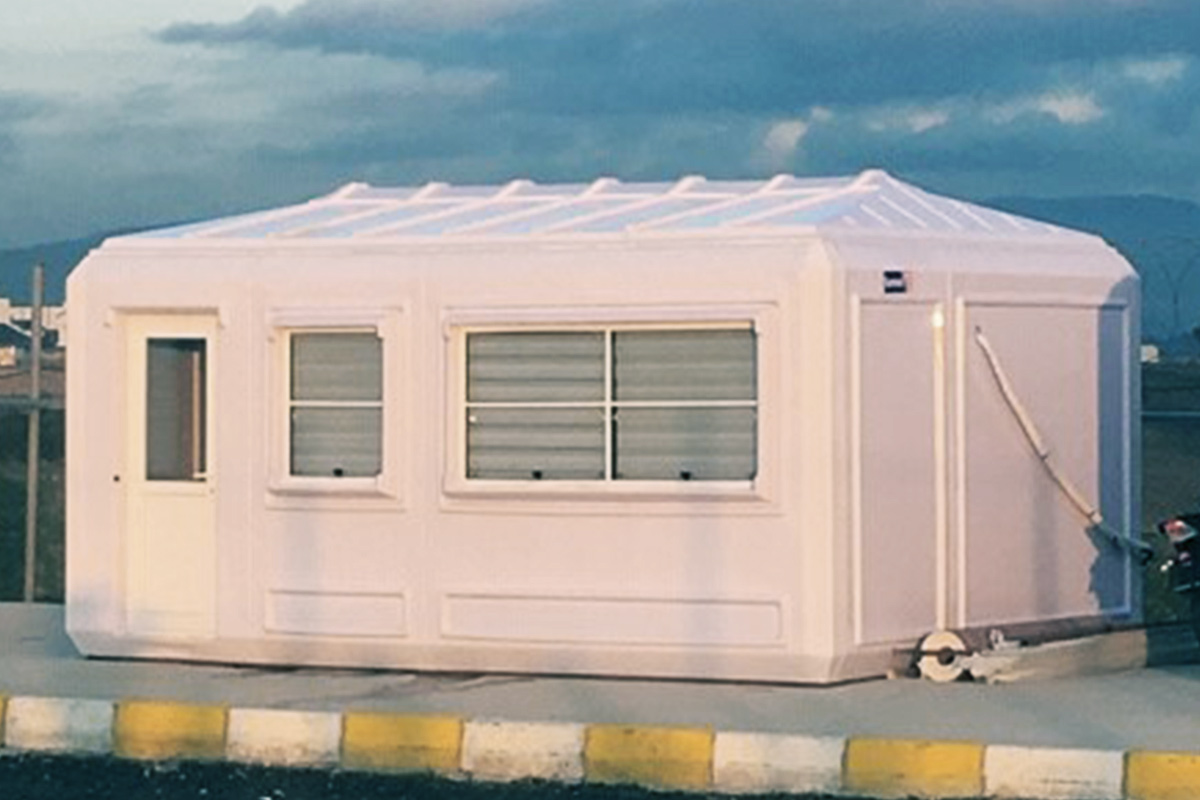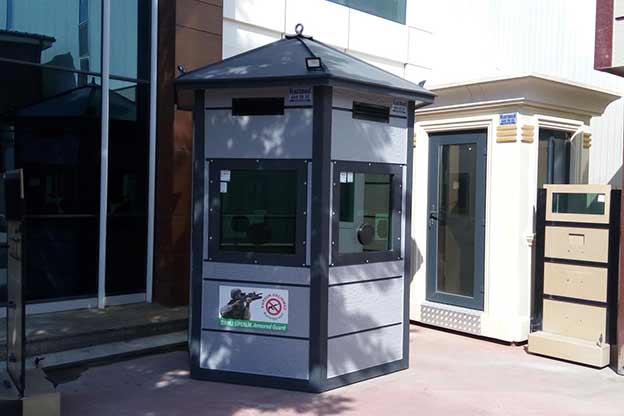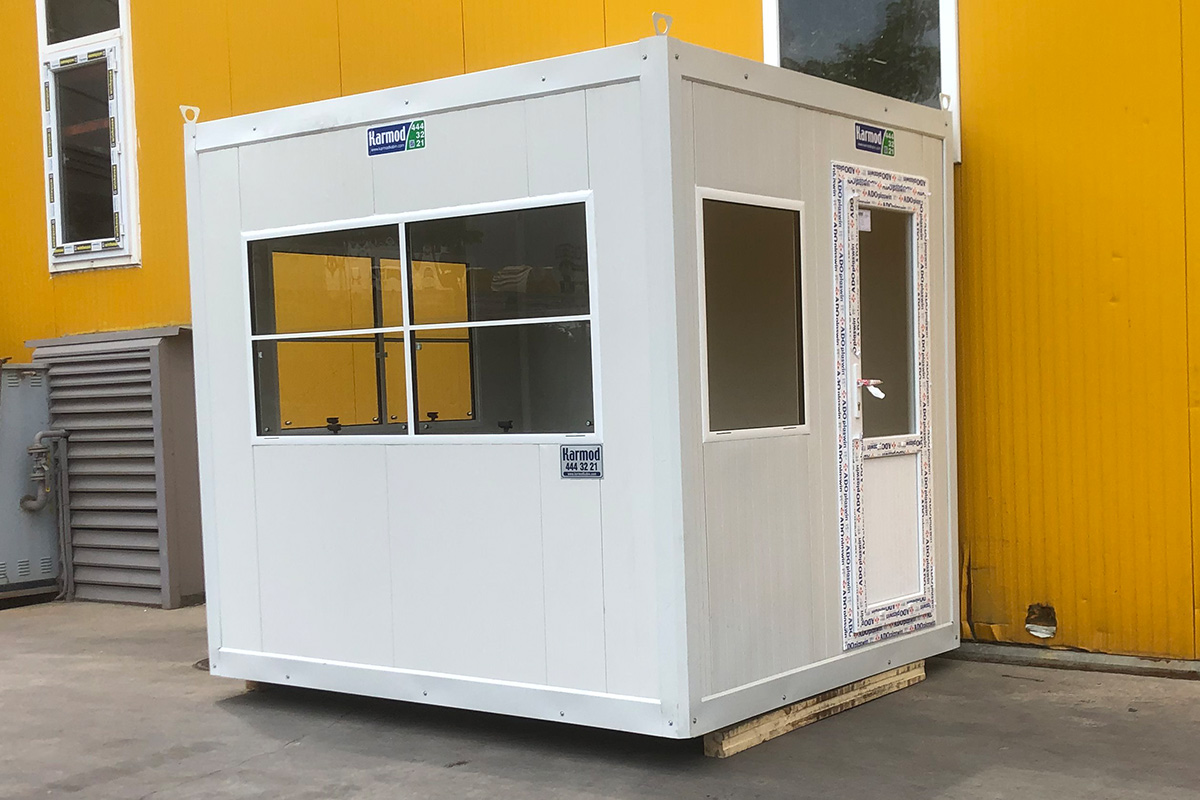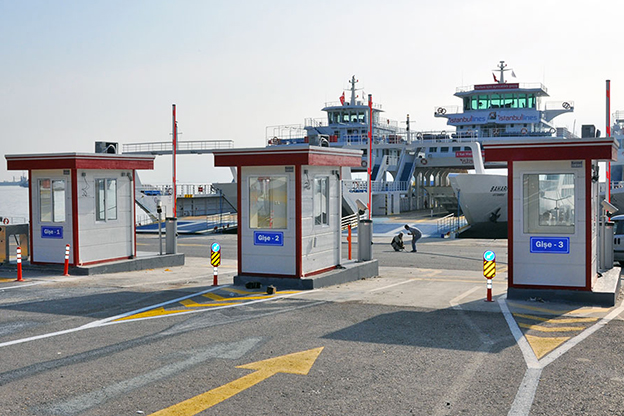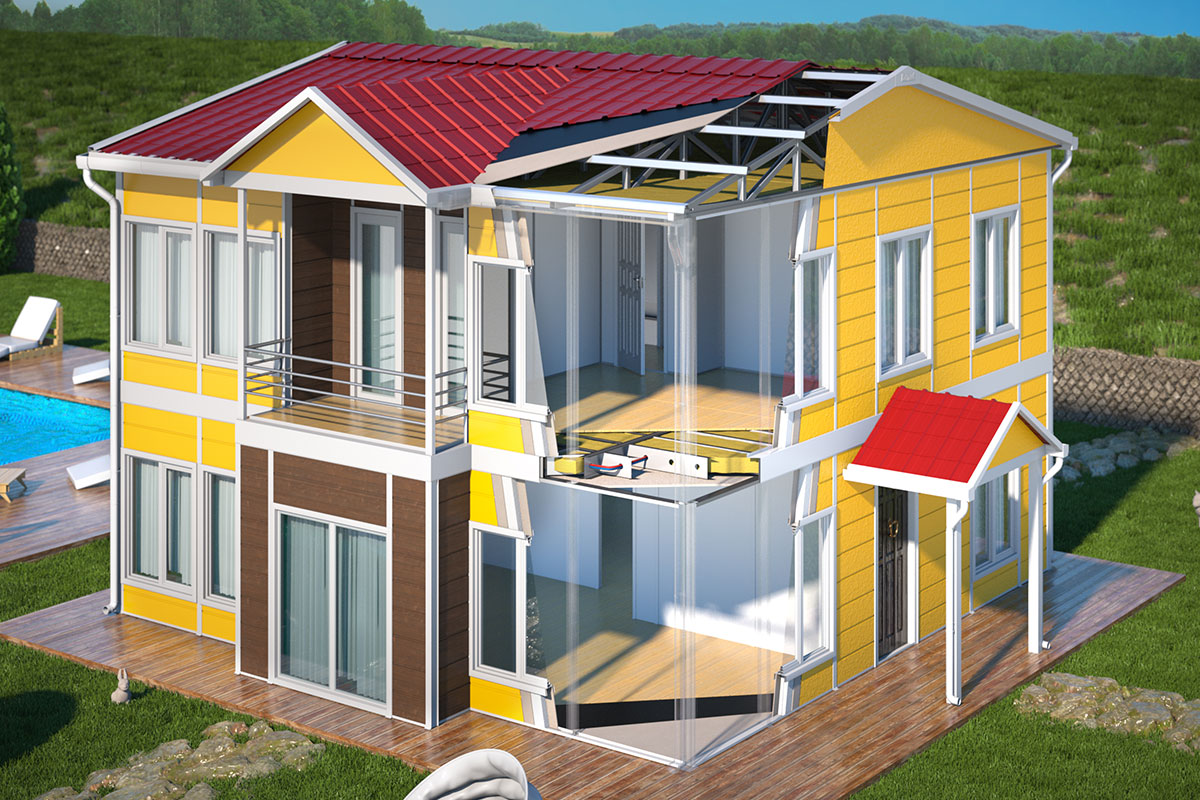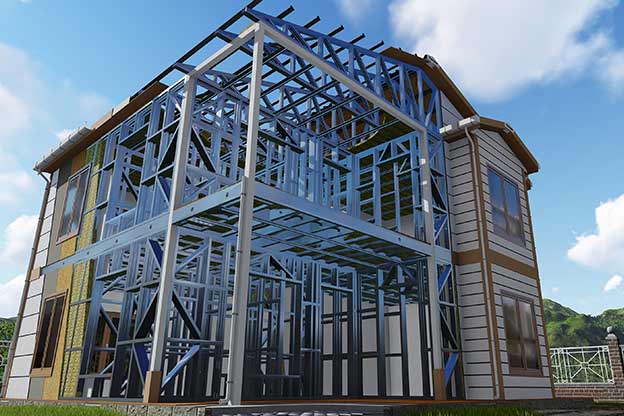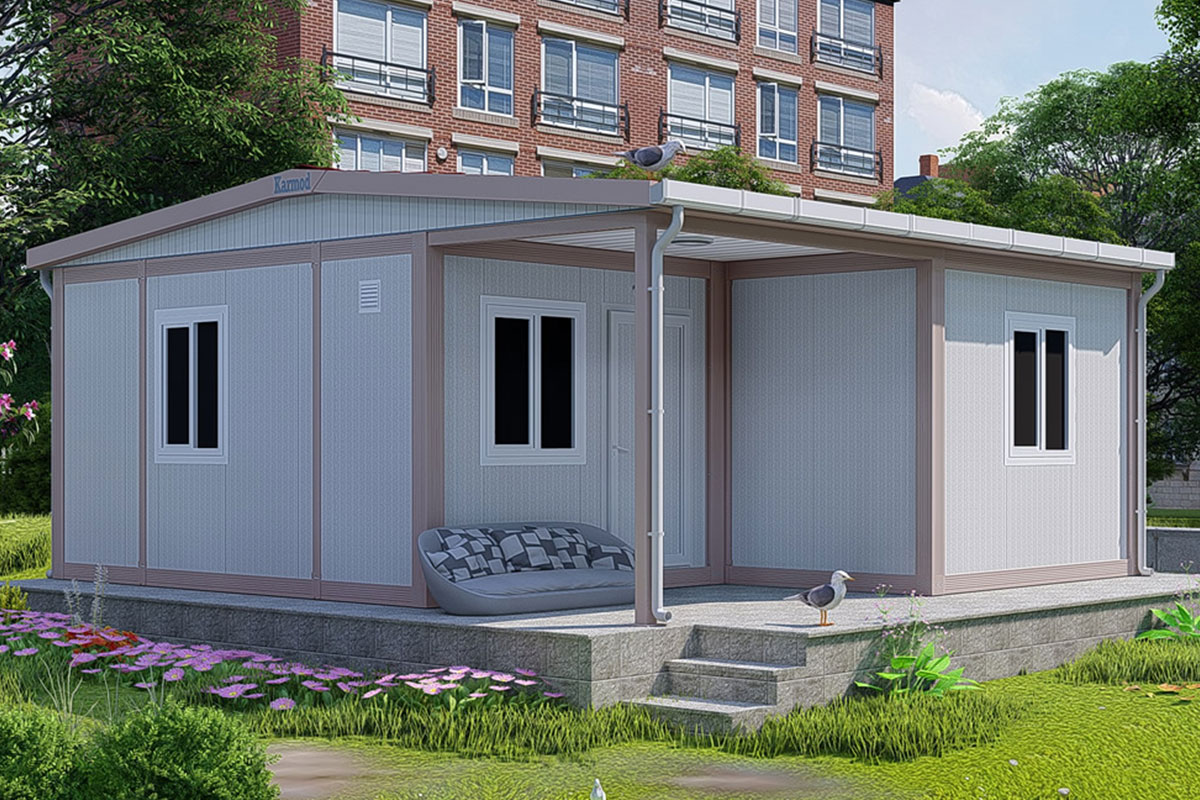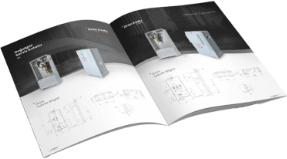| TECHNICAL SPECIFICATIONS OF PREFABRICATED HOUSE | |
|---|---|
| TECHNICAL DATA | |
| EARTHQUAKE CONDITIONS | (1st degree earthquake zone) effective ground acceleration coefficient: A0=0,4 |
| CLIMATE CONDITIONS | Production is made based on 3rd climate zone |
| SNOW LOAD VALUE | 75 Kg/m2 (Montaj yerine göre değişmektedir) |
| WIND SPEED VALUE | 80 km/h (Must be fixed to the ground) |
| EXTERIOR WALL INSULATION COEFFICIENT | K: 0.45 Kcal/m²hC ( K: 0,53 W/m² K ) |
| INTERNAL WALL INSULATION COEFFICIENT | K: 0.44 Kcal/m²hC ( K: 0,51 W/m² K ) |
| LIGHT STEEL MATERIAL | Erdemir 1311 ,(ST-37 ) Standard DIN EN 10147-00, zinc plated galvanized steel structure is used. |
| CEMENT BOARD | Density: ~ 1300 kg / m³ flame retardant (B1 to DIN 4102 Part 1)Thermal conductivity coefficient (λ10 ˚ C dry) |
| EPS (Expanded Polystyrene Foam) | TS EN 13163 |
| CHASSIS LOAD CAPACITY | 200 kg/m² (for two-storey buildings) (Calculated according toT.S 498 e.) |
| ROOF INSULATION COEFFICIENT | K: 0.39 Kcal/m²hC ( K: 0,43 W/m² K ) |
| INTERIOR AND EXTERIOR PANELS | |
| The outer and inner panels are manufactured of 8X1250X2500 mm two-sided cement board. 84mm 12 density polystyrene rigid foam in used between cement baords for insulation. Outer panel thickness is 10 cm and inner panels are 6 cm an the panel height is 250 cm. The heaviest wall panel among the full panel, window panel, door panel, transom panel from which prefabricated houses are made (125x250 cm exterior door panel) is 114 kg. | |
| PANEL JOINTS | |
| As joining elements special U and H galvanized steel profiles are used that are bent and combined by means of special connection system. Rust will not occur as a result of sweating because of the curved edges. | |
| CARRIER CONSTRUCTIONS | |
| Roof trusses, beams and columns are made of special shaped galvanized steel profiles. Along the building every 1250 mm a special shaped steel truss is placed and on top of truss a special shaped galvanized steel purlin is mounted. Bolts and nuts are used in assembly so that building can be reassembled many times. Production is being done in our modern production facilities with seamless and bold connection system. | |
| MEZZANINE CONSTRUCTION | |
| The mezzanine construction carrier frame is made of special shaped galvanized steel profiles. The mezzanine floor is covered with 16mm cement board (cement-bonded particle board). On the ground floor suspended ceiling an 80 mm thickness (14 kg/m³) layer of glass wool is placed for sound and heat insulation. The mezzanine load is 200 kg/m² | |
| ROOF | |
| ROOF SYSTEM | Sloping value for gable roof and pitched roof systems is 30% |
| ROOF COVERING AND INSULATION | Over the metal purlin, painted trapezoidal steel sheets are placed as roof covering.Optionanally tile pattern painted trapezoidal sheets can be applied. Gable end covering is PVC paneling. Overhangs are 20 cm.Wide galvanized steel sheet shaped fringes with vents are used. For the roof special shaped galvanized steel sheet in diagonal shape are being used. PVC made square shape rain gutters and cylindrical downspouts with mounted accessories are used. Rain gutters and its accessories can be made of steel sheet upon request. |
| CEILING | |
| For ceiling covering 12 mm gypsum boards are used. For ceiling insulation above the suspended ceiling gypsum board, 80 mm glass wool is laid. Below the combining roof chassis, omega profiles that are made of galvanized steel are fastened. Rust will not occur as reasult of sweating that occurs on steel sheet edges because of curved shape. PVC cover is used on ceiling Omega profiles to give them aesthetical look. Gypsum boards joining elements are made of electrostatic painted aluminium material. For wet places cement board is used as ceiling covering. | |
| DOOR | |
| EXT.DOOR | 90x200 cm Steel door with metal frame. For external doors a special cylindrical, first class, TSE certified locks are used. |
| INT.DOOR | Interior doors: 80x200 sizes, galvanized steel frame, off-white wooden American door. Aluminum and PVC doors are also optional. TSE certified built-in locks are in use. |
| WINDOWS | |
| WINDOW | 120X100, 120x160 cm and 60x40 cm (transom window) of PVC-based materials and TSE certified and also 60 series. (Optionally frames made out of cement board can be applied around windows and transoms). |
| DOUBLE GLAZING | All glass used for windows is 4 + 16 + 4 double glazed, and for transom frosted glass is used. |
| When order is placed all doors and windows dimensions must be mentioned. | |
| STAIRS | |
| Produced from galvanized steel profiles ,that are specially shaped by rollform machines. Stairs are assembled using seamless screw system. Steps are covered with wood and risers are open. Handrails are manufactured from decorative wrought iron. Metal parts are painted with electrostatic paint.Optionally the stairs can be produced completely from wood. | |
| PAINTINGS | |
| EXTERIOR PAINTING | External metal parts are painted double layer coating and with double layer synthetic oil paint. External cement boards panels surfaces are painted with acrylic paint. For external wall mastic is applied on the jointing areas. TSE certified painting products are used in our buildings. |
| INTERIOR PAINTING | The interior cement board surfaces and ceiling gypsum boards are painted with plastic paint. TSE certified painting products are used in our buildings. |
| OTHER | The galvanized cold formed trusses, purlin and panel frames are not coated as they are produced by means of seamless technology. |
| ELECTRICAL INSTALATION | |
| INSTALLATIONS | Electric installation is applied over plaster using TSE certified cables. |
| CABLES | Installation is applied over plaster and can be flush mounted optionally. |
| FUSES | TSE certified fuses are used. |
| LIGHTING FIXTURES | TSE certified materials are used. |
| SWITCH & SOCKET | TSE certified switch and sockets are used. |
| OUTER CONNECTION | Electric meter, ground rods and outdoor connections are responsability of the buyer. |
| SANITARY INSTALLATION | |
| INSTALLATION | Installation is applied over plaster and can be flush mounted optionally. |
| SANITARY WARE | TSE certified materials are used. |
| TAP AND SHOWER EQUIPMENT | TSE certified materials are used. |
| PIPES | Clean water pipes are made of PPRC and waste water pipes are made of PVC and all materials are TSE certified. |
| OUTER CONNECTION | Water meter and outer connections are responsability of the buyer. |
| FOUNDATION AND CONCRETE | |
| Concrete slab (foundation) should be done according to the concrete plan (basic dimensions) provided by Karmod. Concrete slab and soil survey are responsabilites of the customer.The building is fixed to the ground with anchors and steel dowels. Anchored raft or steel wire mesh foundation should be prepared. The customer is responsible for all excavation operations. | |
What is a Manufactured Modular Home?
It is true that Prefab Modular homes are "manufactured" in a factory just like any other. However, there are very important differences. When we talk about the modular houses produced by Karmod, we need to clarify that we are talking about real, “sandwich panel system” prefabricated modular houses. Before a modular home (or prefab home) is shipped, the manufacturing facility is approximately 85-90% complete at the factory and then trucked to the construction site. Manufactured or Modular Houses are assembled on site.
What are modular homes and what do they cost?
Prefab Homes Affordable – fabricated prefabricated modular homes typically cost much less than the average custom or bar structure reinforced concrete homes. Buying a modular home is, of course, much more expensive than paying the flat rent; however, depending on your future plans, you have an affordable long-term home option.
Modular Homes: What are the Pros and Cons
A Prefab modular home is a home that is partially built in a factory and shipped to the homeowner's party, where it is assembled, the foundation is concreted, and then the modular homes are assembled and completed on-site. Like traditional reinforced concrete houses, prefabricated modular homes are built on a permanent foundation and often have basements. The construction of a modular home must comply with local building codes and environmental standards in the area where the home will be located. Although the construction process is a little different from traditional reinforced concrete houses, you will have a hard time identifying a prefabricated house just by looking at it.
What is the Biggest Disadvantage of Modular Homes
There are many design options in modular homes. A Prefabricated modular home, unlike its manufactured counterpart, is not built on a chassis that is not shipped fully assembled. It is built to be approximately 85-90% complete on a factory production site before the home moves into the buyer's property. The modular home comes to the job site in multiple modules, with a crane operator placing each piece in place on the foundation and assembling it. Once completed, you will find that a prefab modular home is indistinguishable from a conventionally built home.
Compared to prefab Modular homes, manufactured homes usually cost less. They are built using different building standards than modular and site-built homes.



